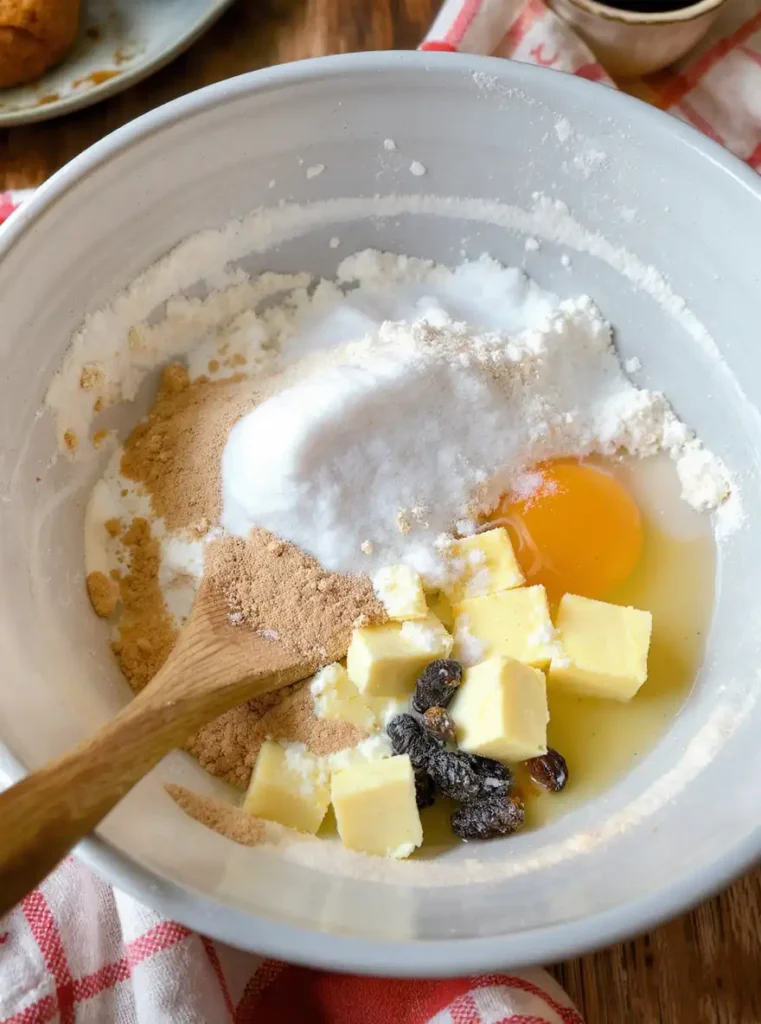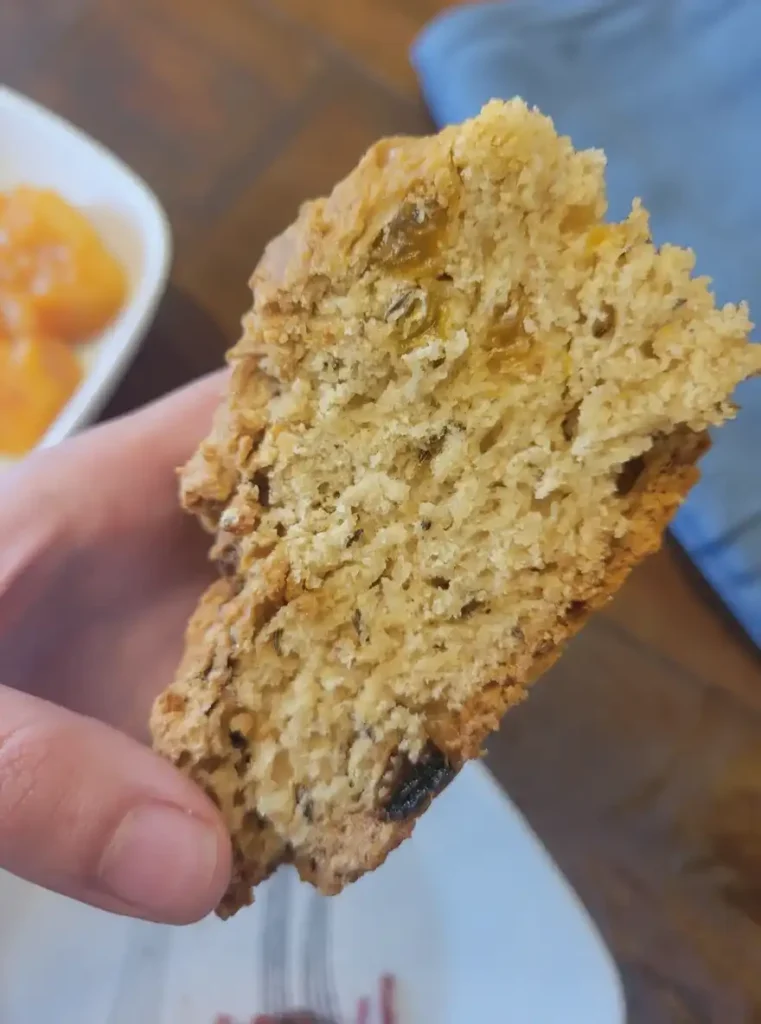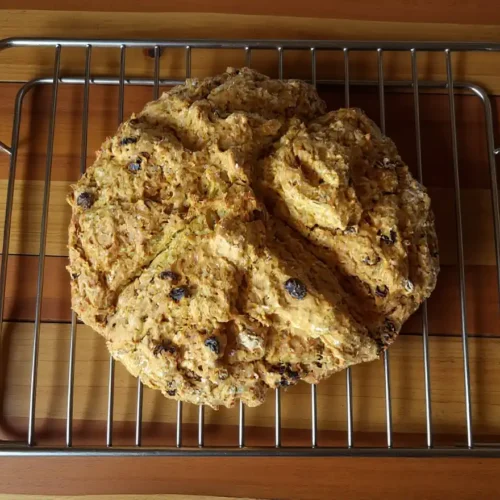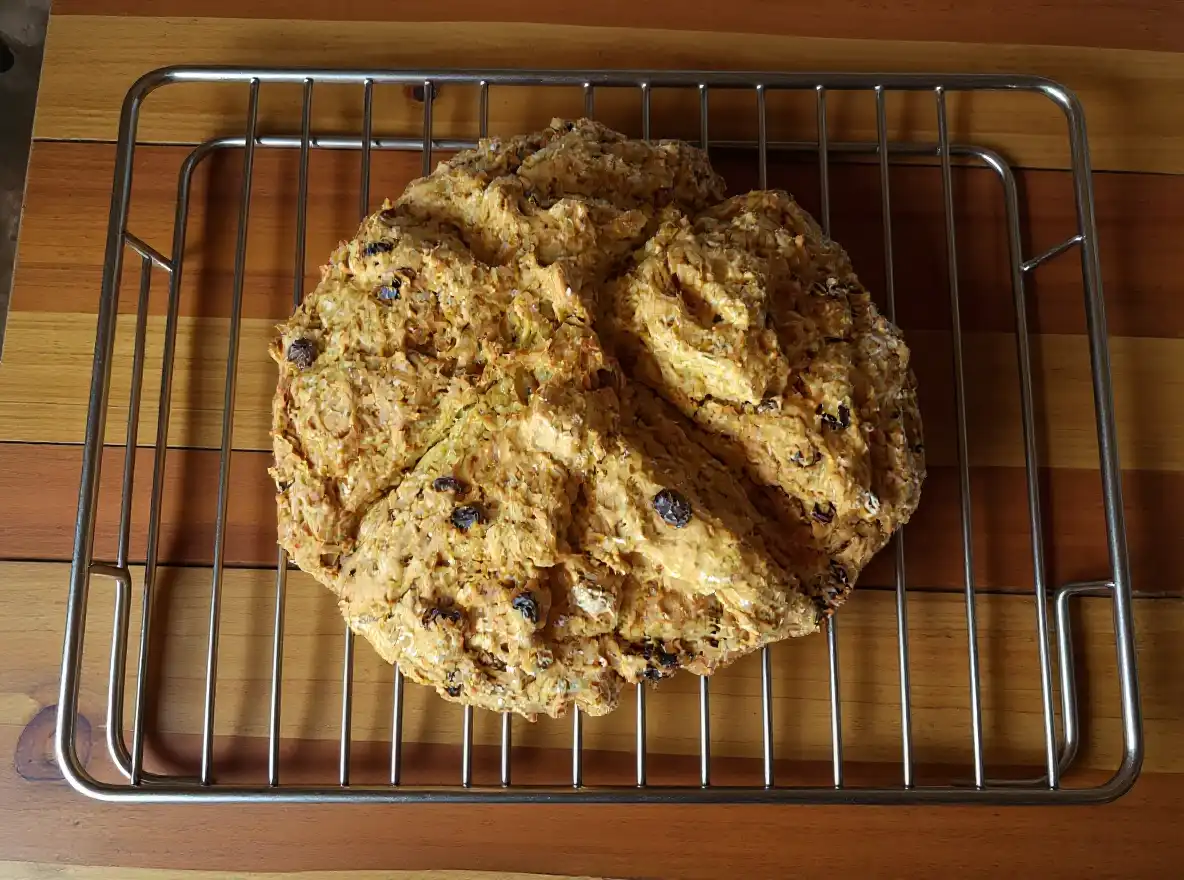Brief Background Story
Led by our passionate culinary inspirator Sonia, we create a space where traditional cooking meets modern techniques and smart digital solutions. With extensive experience in both home and professional cooking, Sonia is passionate about making culinary arts accessible to American families. Her Nordic-European heritage, combined with her deep understanding of American palates, allows her to create recipes that feel both familiar and exciting. As the founder of Recipes Unfolded, she specializes in elevating classic American comfort foods with subtle global influences. Her approach blends time-honored methods with practical tools already found in modern American kitchens.
Why This Bread Stands Out
Sourdough Irish soda bread takes the rustic comfort of classic soda bread and makes it even better. By adding sourdough starter either active or discard you introduce a deeper, more nuanced flavor without losing the ease of quick bread. If you’re looking for another twist on soda bread, try our Irish soda bread scones for a tender, bite-sized variation.
Ingredients & Tools Breakdown

Essential Ingredients
This sourdough Irish soda bread recipe uses easy-to-find ingredients many of which are probably in your kitchen right now. Here’s the full list, measured in both grams and U.S. cups for convenience:
| Ingredient | Amount (Metric) | Amount (US Customary) |
|---|---|---|
| All-purpose flour | 375 g | 3 cups |
| Granulated sugar | 50 g | 4 tbsp |
| Baking soda | 5 g | 1 tsp |
| Fine sea salt | 7 g | 1 ½ tsp |
| Unsalted butter | 60 g | 4 tbsp (cold, cut into cubes) |
| Large egg | 1 | 1 |
| Buttermilk | 170 g | ¾ cup |
| Sourdough discard | 200 g | 1 cup (active or discard) |
| Raisins | 150 g | 1 cup |
Pro Tip: Cold butter is key just like with biscuits! It creates tender layers and a richer mouthfeel.
Tools You’ll Need
Make your baking experience smooth by having the right tools on hand:
- Stand mixer with paddle attachment (or large bowl and sturdy spoon)
- Parchment paper and baking sheet
- Wire rack for cooling
- Serrated knife for scoring and slicing
- Toothpick or uncooked spaghetti to test doneness
Optional but helpful: Digital kitchen scale for precise measurements and consistent results.
Step-by-Step Instructions for Perfect Results
Mixing the Dough
Making sourdough Irish soda bread is refreshingly straightforward and doesn’t require any yeast or lengthy proofing times. To begin, preheat your oven to 375°F (190°C) and line a baking sheet with parchment paper. This bread is mixed quickly and baked immediately, making it ideal for busy days.
In the bowl of a stand mixer fitted with the paddle attachment, combine your all-purpose flour, sugar, baking soda, and salt. These dry ingredients form the base of the sourdough Irish soda bread’s structure.
Next, add your cold, cubed butter into the flour mixture. Mix until the butter is evenly dispersed and the mixture looks like coarse crumbs. This step adds richness and contributes to the crumbly texture the bread is known for.
In a separate bowl, lightly beat the egg, then stir in the buttermilk and your sourdough starter or discard. The sourdough not only enhances the bread’s flavor but also gives your sourdough Irish soda bread its signature chew and depth. Want more ways to use your sourdough discard? Browse our collection of breakfast recipes that put every spoonful to good use.
Gradually pour the liquid mixture into the dry ingredients while mixing on low speed. You’re aiming for a dough that holds together but remains a little sticky. Finally, fold in the raisins, mixing just until combined.
Shaping and Scoring
Turn the dough out onto a well-floured surface. It’s sticky, but don’t overflour just enough to handle it. Knead briefly, about 4 to 5 turns, to bring it together into a round loaf.
Transfer the dough to your prepared baking sheet. Using a serrated knife, cut a deep “X” across the top of the loaf. This traditional scoring not only gives sourdough Irish soda bread its signature look, but also helps it bake evenly. These pillowy rolls are another creative way to bake with discard—soft, sweet, and perfect for brunch.
Baking and Cooling
Place the loaf on the center rack and bake for 45 to 55 minutes. At around the 40-minute mark, check for over-browning. If needed, loosely cover the bread with foil to protect the crust.
To ensure your sourdough Irish soda bread is fully baked, insert a toothpick or dry spaghetti noodle into the center it should come out clean. You’ll also hear a hollow sound when tapping the bottom of the loaf.
Transfer the bread to a wire rack and let it cool for at least 20 minutes. Slice into wedges rather than straight slices to preserve its rustic, hearty structure. Serve warm or at room temperature with a generous pat of butter.
Troubleshooting and Storage Tips

Why Didn’t My Sourdough Irish Soda Bread Rise?
If your sourdough Irish soda bread came out flat, there are a few likely culprits. Unlike traditional sourdough loaves, this recipe relies on baking soda and an acidic component such as buttermilk or sourdough starter to create rise.
Possible causes:
- Expired or ineffective baking soda
- An overly acidic sourdough discard that neutralizes the soda
- Overmixing the dough, which deflates air pockets before baking
Always use fresh ingredients and mix the dough just enough to bring it together. A gentle hand helps the structure hold during baking.
Why Is My Dough So Sticky?
Sticky dough is actually a sign you’re on the right track. Sourdough Irish soda bread dough tends to be wetter than expected due to the hydration in the sourdough starter.
Here’s how to handle it:
- Dust your hands and work surface with extra flour, but don’t overdo it.
- A dough scraper helps move and fold the dough without sticking.
- Remember: the stickiness results in a moist, tender crumb once baked.
Why Is My Sourdough Irish Soda Bread Raw in the Middle?
If the loaf looks perfect outside but is gummy or undercooked inside, it likely needed more time in the oven. This can happen if the loaf is especially thick or your oven runs cool.
Try these fixes:
- Bake on the center rack for even heat distribution.
- Check doneness with a skewer if it doesn’t come out clean, bake for 5–10 more minutes.
- Tapping the bottom should give a hollow sound, a sure sign it’s baked through.
Tent the top with foil if it starts browning too fast.
How to Store Sourdough Irish Soda Bread
Sourdough Irish soda bread is best enjoyed the day it’s made, but you can still store it for later without sacrificing texture. If you’re into easy savory bakes, this sourdough focaccia is another great way to use up starter while prepping ahead.
- At room temperature: Wrap the loaf in a tea towel or paper bag and store in a cool, dry place for up to 2 days.
- In the freezer: Slice it first, wrap individual wedges in plastic, then freeze in a sealed bag. Toast straight from frozen when ready to eat.
Avoid airtight plastic containers at room temp they trap moisture and soften the crust, making the bread soggy.

Homemade Sourdough Irish Soda Bread
Equipment
- Stand Mixer with paddle
- Bowl
- Sharp Knife
- Baking Sheet
Ingredients
Dry Ingredients
- 375 g all-purpose flour (about 3 cups)
- 50 g granulated sugar (about 4 Tbsp)
- 5 g baking soda (1 tsp)
- 7 g fine sea salt (1½ tsp)
Wet Ingredients
- 60 g unsalted butter cold, cut into cubes
- 1 large egg
- 170 g buttermilk approx ¾ cup
- 200 g sourdough starter (discard or active) approx 1 cup
- 150 g raisins optional, approx 1 cup
Instructions
- Gradually add wet mixture to dry ingredients in mixer until just combined. Fold in raisins if using; dough will be sticky.
- In mixer bowl, combine flour, sugar, baking soda, and salt. Add cold butter cubes and mix until mixture resembles coarse crumbs.
- In a separate bowl, lightly beat egg with buttermilk and sourdough starter.
- Gradually add wet mixture to dry ingredients in mixer until just combined. Fold in raisins if using; dough will be sticky.
- Turn dough onto lightly floured surface and form into a round loaf. Transfer to prepared baking sheet and cut a deep “X” on top.
- Bake 45–55 minutes until a skewer inserted comes out clean and loaf sounds hollow when tapped. Cover with foil after 40 minutes if browning too quickly.
- Cool on a wire rack. Cut into wedges and serve warm or at room temperature.
Notes
FAQs
Why didn’t my sourdough Irish soda bread rise?
If your sourdough Irish soda bread didn’t rise, the issue is likely with your leavening agent. Baking soda must react with acid (in this case, buttermilk and sourdough starter) to create lift. If your starter is too acidic or the baking soda is expired, the rise will suffer. Also, overmixing the dough can deflate the air bubbles before baking.
Why is my sourdough Irish soda bread dough sticky?
Sticky dough is common with sourdough Irish soda bread due to the moisture from the starter. It’s nothing to worry about. Add just enough flour to handle it without compromising the final texture. Too much flour will result in a dry, dense loaf.
How do you store sourdough Irish soda bread?
Store sourdough Irish soda bread wrapped in a clean kitchen towel or a paper bag at room temperature for up to two days. For longer storage, slice and freeze the loaf in individual wedges. Reheat in the toaster or oven as needed. Avoid sealing it in plastic at room temperature, as it can become soggy.
Why is my sourdough Irish soda bread raw in the middle?
If the center is raw, your loaf probably needed more baking time. Always check doneness with a skewer or toothpick it should come out clean. You can also tap the bottom of the loaf; if it sounds hollow, it’s done. If not, return it to the oven for 5–10 minutes more, covering the top with foil if it’s browning too fast.
How do you fix bread that didn’t rise?
While you can’t “rescue” a baked loaf that didn’t rise, you can learn from the process. For next time, check the freshness of your baking soda, don’t overmix the dough, and ensure your sourdough starter is not overly acidic. Remember, sourdough Irish soda bread depends entirely on chemical leavening for lift not yeast.
How do you know when sourdough Irish soda bread is done?
A properly baked sourdough Irish soda bread loaf will be golden brown, sound hollow when tapped on the bottom, and pass the skewer test with a clean insert. If you’re unsure, err on the side of baking it a few minutes longer it’s better slightly overdone than underbaked in the middle.

Sourdough Irish soda bread is the perfect union of tradition and creativity rustic, quick to make, and wonderfully flavorful. Whether you’re using up sourdough discard or experimenting with new twists on old favorites, this recipe delivers dependable results and a hearty loaf that feels homemade in the best way.
With no need for yeast, kneading, or hours of proofing, sourdough Irish soda bread proves that great bread can be both simple and satisfying. Explore even more delicious ideas in our sourdough collection including cookies, cakes, and more discard-friendly bakes.
If you loved this recipe, check out our other baking tips and easy bread recipes to keep your kitchen full of fresh, flavorful inspiration.
